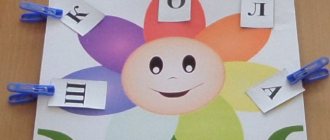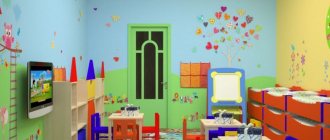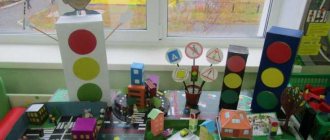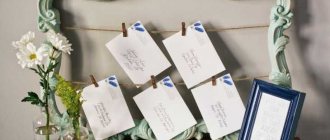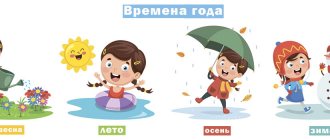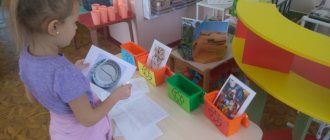Material for the competition “Game Methods”
Board games
Authors: Elena Derunova and Yana Syaina, teachers of the “Pochemuchki” group at GBDOU No. 16, Moskovsky district of St. Petersburg.
The game task determines the game actions and is the task of the child himself. During the game, the child’s attention is drawn to performing game actions.
Goal: development of concentration, logical thinking, attention, ability to analyze a situation, intelligence, fine motor skills.
Objectives: - consolidate ideas about the heroes of the Violet Forest, geometric shapes used in games; teach to distinguish and compare them with each other and name them correctly; — enrich and develop children’s vocabulary; - create a desire to play in a team; - develop attention, visual memory, observation.
Educational objectives in the game: - activation and updating of the vocabulary for the game; - expansion and clarification of the dictionary on the topic of domino game, lotto game - game, rules, order in the game, players, market, game progress, points, color; — improvement of the grammatical structure of speech (prepositional-case constructions, formation and use of adjectives in the comparative degree); — improving the syntactic aspect of speech (composing complex sentences);
Developmental tasks: - development of coherent speech, speech hearing, thinking, visual attention and perception, fine motor skills. Educational objectives: - formation of mutual understanding, goodwill, independence, initiative, responsibility, cooperation skills, the ability to play by the rules, without breaking them, but by agreeing with each other. Educational areas: social-communicative, cognitive, speech, physical education.
Preliminary work: acquaintance with the characters-heroes of the “Fairy Tale Labyrinth Game”; discussion of their image, character, history of their life in the Violet Forest; inventing fairy tales about them; recalling fairy-tale situations from various technology games.
Dominoes "Fairy-Tale Heroes"
Children's age: 3-5 years.
Material: cards with drawings of heroes of the Violet Forest – 200 pieces. cards with drawings of the characters’ halves – 400 pieces. They are dismantled in smaller batches.
Instructions for the game:
1. Domino game in the usual version: cards are distributed to children in 6-10 pieces. Choose a driver in any way. Children follow each other, putting their cards on the field. If necessary, take additional cards in the “bazaar”. The winner is the one who first runs out of cards and there are none in the “bazaar”.
2. Lay out the cards one after another, without repeating the character’s drawing, but placing a different one each time - Geo, Raven, Lopushok, All, Slice, Fifa Caterpillar and so on. Calculate how long the path would be if you do not repeat the drawings of the characters.
3. Build columns of pictures, where in the first column the first picture is Baby Geo. Second column, first picture – Raven Meter. Third column, first picture – Lopushok. And so on. At the same time, place identical heroes in the first row in each column. For example, in the first row everyone has Mishik, in the second row there is the kitten Timoshka, in the third there is Invisible All. Count how many columns there are, how many rows there are in each column.
4. Tasks for the children - to populate a house with 5 floors and 5 entrances so that the inhabitants do not repeat themselves. Baby Geo went to visit his friends - in the first entrance he went 2 floors up - who did he come to visit?, on the 3rd floor he went 2 apartments to the right - who did he come to?, from there he went to ... any direction . The kid came to the middle apartment on the middle floor - who was he visiting? Where can he go now (direction of movement and number of floors or apartments) - the game “Fly”.
5. Build a table of dominoes - 2x2, 3x3, 4x4, 5x5, etc., so that the drawings of the characters do not repeat. We ask the children who stands where, who is friends with whom, who is above whom, below whom, who is the neighbors on the right, on the left, standing between whom. Various options for questions on plane orientation.
Games “Loto – Colorful Gnomes”
Material: cards of a large field, differing in color - gnome heroes: red Kohle, orange Ohle, yellow - Jelly, green - Zele, blue - Gele, blue - Sele, purple - Fi, white - Belyash, gray - Serge, black - Chernysh.
Cut-out pictures - gnomes, geometric shapes, game details - 10 colors.
Option 1: all fields and drawings in the pictures are the same size.
Field of 4 parts. In the center there is a colored gnome, on top there is a circle, a square; below - a triangle, a rectangle - when you put all the figures on a large field - the drawing of a gnome is not visible.
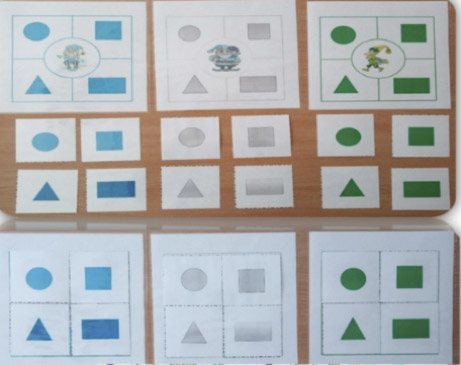
Field of 6 parts. First row – petal, gnome, circle; second row – checkbox, square, circle.
Option 2: Sizes of fields and cards – large, medium, small. Place the cards on the field depending on the size of the picture and the field.

Option 3: the size of all three fields is large. The drawings on them are large, medium, small.
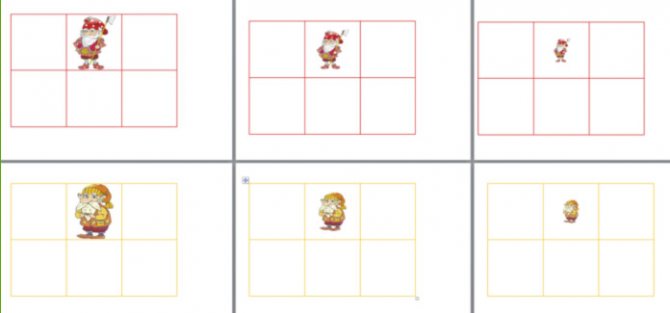
Field of 9 parts. The first column is a petal, a flag, a turtle; second column – Hedgehog One, red gnome Kohle, one from Transparent Number sticks; third column – circle, triangle, square.
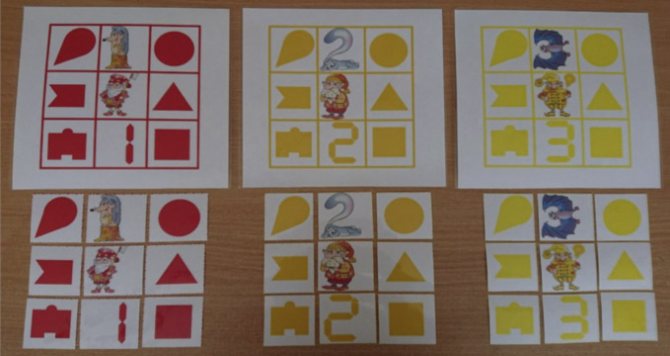
Explanations: – the petal is opposite the circle – because their shape is the same – a circle; The flag is opposite the triangle - because the cutout on the flag is triangular; The turtle is opposite the square - because its shape, legs, and head are similar to a square. Hedgehog One and the number 1 together with the red gnome Kohle - because red is the first color in the rainbow. Hare Deuce and number 2 - together with the orange gnome Okhle - because orange is the second color in the rainbow and so on.
Instructions for the game:
1. Fill in all parts of the large field with pictures of the appropriate color and size. Many people can play, maybe 1 child can take the cards themselves and put them in the appropriate places.
2. The presenter fills in large fields with pictures - with errors - the size, color, shape does not match. The child is looking for where the mistake is.
3. Lay out all the cards with pictures on the table (first with one type of lotto, then more pictures). The classification task is to collect and arrange all the gnomes, red, light, bright, dark, one after another on the table; all red (blue, yellow, green) cards; all circles, squares, flags; all are not round, not blue, not big; all the numbers, all the little animals; build a tower of pictures - at the bottom - large pictures, above - medium ones, even higher - small ones.
4. Change of size. Place large pictures on the small gnome, small ones on the middle one, medium ones on the large one.
5. Color change. Place blue cards on the red gnome, gray cards on the black one, and white cards on the yellow one. Collect all the colorful pictures on one field.
6. Change of properties - color, size, shape. Collect on one field all the drawings that are not repeated in color, size, or image.
7. Make a train of trailers - each trailer differs from the previous one in one of the properties (image, color, size).
8. All rearrangements are clearly stated by the child, why you put this particular drawing - a change in properties.
9. Two rows of cells - 6 (or less or more) on each row. On the first row are red, yellow, blue, green, light blue, and gray gnomes. On the second row there are geometric shapes of the same color, but in a different order and one cell is empty. The gnomes were walking and lost their bags, found them and mixed them up. Let's help them take their handbags, their colors. You can only move pieces to an empty cell. The gnomes are waiting for us to help them. First, the figure is placed on an empty square of the desired color, like the top gnome - this is the first pair - how many squares and in which direction did we move it? Then again on an empty cell we place a figure of the corresponding color like the top gnome. Thus, all the gnomes teach their colored bags.
Games for educators to develop children's thinking
In cognitive activity, which is one of the main ones for a schoolchild, the leading role is played by cognitive processes: attention, memory, thinking, imagination. They are all interconnected, and it is difficult to single out any one that is more important than the rest. Mathematics is especially useful for developing thinking.
Lomonosov also said that mathematics must be taught later, that it puts the mind in order. And one of the greatest humanist educators, Johann Heinrich Pestalozzi, believed that counting and calculations are the basis of order in the head.
“I won’t get lost!”
This game not only introduces numbers, but also teaches attentiveness and concentration, which is very necessary for a child in the learning process.
All players stand in a circle. Task: count from one to twenty, observing various conditions, saying each time, instead of a number that cannot be pronounced in the game, the words “I won’t get lost!”
For example: we do not pronounce the number 3 and numbers that contain the number 3, that is, 3 and 13. Numbers that contain the number 1, and these are 1, 10, 11, 12, 13, 14, 15, 16, 17, 18, 19. And so on.
As the game becomes more difficult, you can count up to thirty, forty, and so on.
"Math relay"
Game for the preparatory group of kindergarten . It is important that children already know how to perform basic mathematical operations of addition and subtraction within tens.
Children are divided into teams of 10 people. Each person is assigned a number from 1 to 10. The players’ task is to listen carefully to the teacher, who says what number they should run, or reads a simple example, the result of which will be the number with which the participant will run to the finish line.
The winner is the team whose members will listen to the teacher more attentively and will be the first to complete each stage of the relay.
"Magic Line"
The game develops not only creative imagination, but also hand movements.
To play, children are divided into pairs. In each pair, one of the children draws some kind of winding line on a piece of paper with a felt-tip pen, the second’s task is to complete the line in such a way that it turns out to be some kind of image of an object, animal or phenomenon. Then the pairs change tasks. After completing the task, the children explain what they did.
"Logic Train"
You can play from the age of three . A set of items from the games “Magic Bag” and “One and Many” can be used for the game. Items that can be added:
- identical in shape: round, square;
- by purpose: items of doll clothes, doll dishes, toy vegetables, fruits and so on.
The teacher invites the children to choose several items from the available ones, put them in a chain and explain why they chose this sequence.
For example, the children chose a ball, a ball, a tangerine and an apple because they are all round, or a cat, a ball, a sheep, socks and a bear cub, because the cat and bear are covered with wool, socks and a ball are woolen threads that are spun from sheep's wool .
If the players are six or seven years old , then two teams of children can participate in the “Logic Train”. In this case, the game, in addition to logical thinking, will develop the ability to negotiate, act together, listen to each other and leadership qualities: the ability to correctly formulate and convey one’s point of view, organize a team to complete a task.
Lotto "Seasons"
“Winter” - blue background; numbers - 12 (December) - Hedgehog One and Bunny Two, 1 (January) - Hedgehog One, 2 (February) - Bunny Two; gnomes Belysh, Gele, Sele, Chernysh, Fi - the colors of winter; in the picture, children are playing in the snow, building a snow fort, dressed in winter clothes.
“Spring” - light green background; numbers – 3 (March) – Bat Three, 4 (April) – Mouse Four, 5 (May) – Dog Five; gnomes - Kohle, Ohle, Jelly, Gele, Zele - the colors of spring; in the picture, children are going to plant a tree, a girl is picking flowers; snowman melts; a stream flows; trees bloom; a bird flies to the birdhouse; children are dressed in spring clothes.
“Summer” - light green background; numbers - 6 (June) - Cat Six, 7 (July) - Crocodile Seven, 8 (August) - Monkey Eight; gnomes - Kohle, Ohle, Zele, Gele, Sele - the colors of summer; children swim in the lake, pick flowers; the boy catches fish, the girl catches butterflies.
“Autumn” - orange background; numbers - 9 (September) - Fox Nine, 10 (October) - Hedgehog One and Magnolik, 11 (November) - Hedgehog One and Hedgehog One; gnomes - Kohle, Okhle, Jelly, Serge, Chernysh - autumn colors; in the picture, children hid under an umbrella from the rain and are walking through puddles, a cloud has covered the sun, a hedgehog is carrying mushrooms, birds are flying away, the trees are yellow, orange, leaves are falling, mushrooms are growing.
The playing fields depict the same landscape of the Violet Forest, at different times of the year and with different heroes. In the cut-out pictures, find drawings suitable for each season.
Playing field “Winter” - a winter forest in snow and snowdrifts, a house, Raven Meter, the wizard Invisible All, little pebble Karchik.
Playing field “Spring” - the picture shows the nature of the spring period, the Christmas tree is green, the snow is melting, streams are running, snowdrops are blooming; figures of Baby Geo, Mishik, girls Dolki, Lucha of the Lord, Karchik sitting on the roof of the house.
The “Summer” playing field is a green summer forest, all the trees are in foliage; Golden fruits hang on two of them; daisies and bells have bloomed, butterflies are flying; figurines of Philemon Cotterfield the Cat, Krabych the Crab, Fifa the Caterpillars, Zhuzhi the Bee, Timosha the Whale, Captain the Goose, and three Little Frogs.
Playing field “Autumn” - autumn yellowed forest; Lopushko, Elephants Lyap-Lyap and Lip-Lip, Okolesik, Krutik Po, Spider Yuk, Raven Meter sits on the roof of the house.
Puzzles
The child’s goal is to assemble the picture correctly.
Objectives: - the purpose of the cut pictures is to teach the child to compose a whole from several parts; correlate the images of parts of the drawings with the holistic image of real characters; — in the process of playing with pictures, the child gets acquainted with the world around him, expands his vocabulary, and his speech becomes more active; - develops logical thinking, attention, visual perception, gross and fine motor skills, coordination of movements, creative imagination, perseverance, concentration; - promote the development of the ability to compare, contrast, analyze, generalize, and draw conclusions; — cultivate patience, the desire to independently assemble the picture to the end.
Instructions: It is proposed to assemble one whole image from a set of pictures. The child must tell who is depicted and what he knows about the drawn characters. Give the children all the pictures from all the puzzles - a task for classification, analysis, generalization - sort into groups.
Colorful gnomes
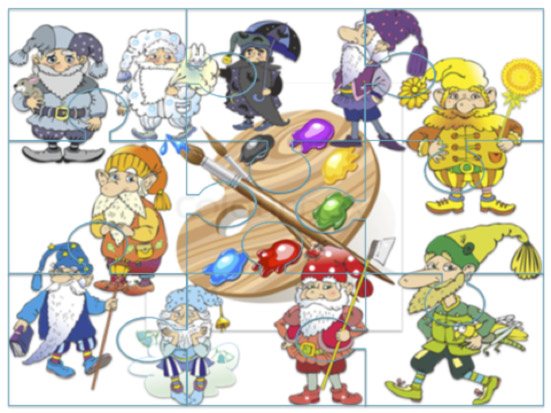
Digitized animals
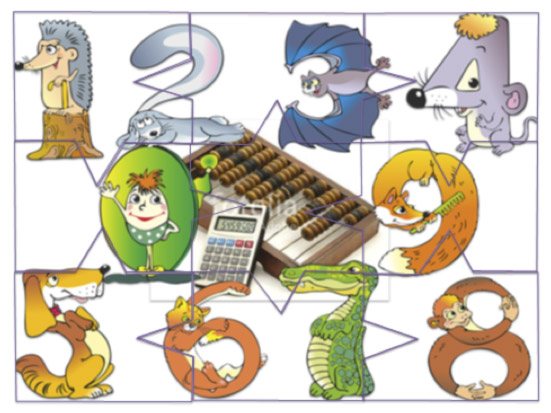
Wizards.
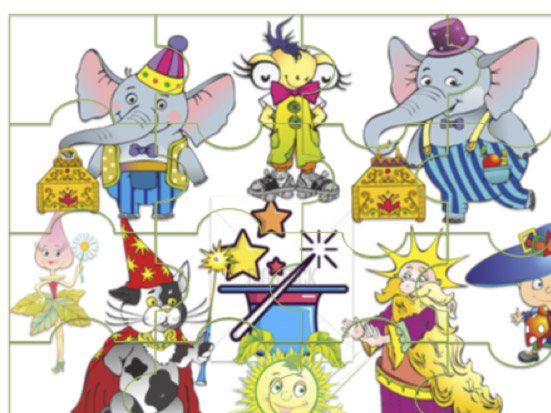
Flying
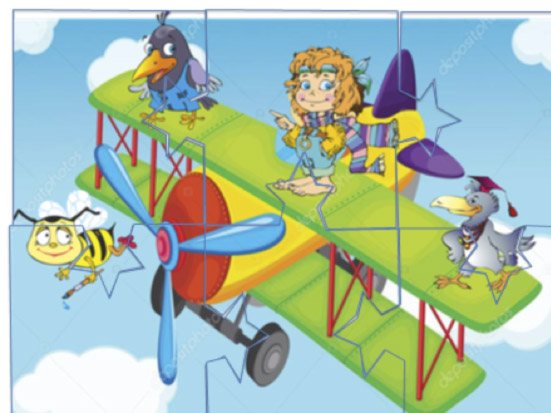
Floating
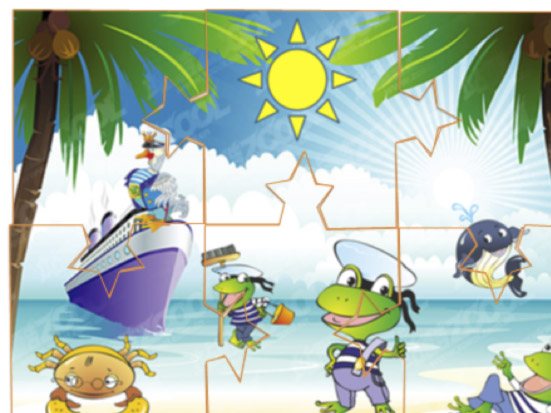
Residents of the Violet Forest
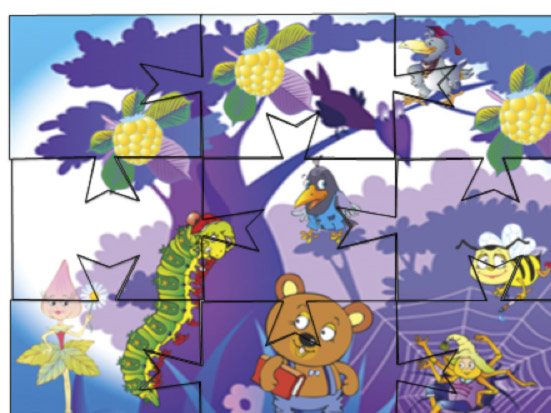
Theater games for educators
Theatrical games for educators are one of the most effective means of developing a child’s personality in the process of theatrical activities. Artistry, creative imagination, coordination of movements, communication skills, correct speech, empathy - all these qualities can be developed in children using the means of theater.
"Let's play a fairy tale!"
All kids love fairy tales. Playing a fairy tale - what could be better for development! First, children (this game is better suited for a preparatory group ) offer heroes - participants in the fairy tale. Then the teacher and the children all compose a fairy tale together.
In order for children to be able to correctly structure the plot, the teacher introduces them to the algorithm for composing a fairy tale according to Propp. A lightweight and slightly modified algorithm, with only 7 points, can easily be used by six- to seven-year-olds.
Algorithm for composing a fairy tale
1. Someone was not invited to an event that was important to him. Children come up with a hero and where he was not invited: to visit, to a ball, to a holiday, to the cinema, to grandma’s, on a hike, on an excursion, on a trip, for a walk, to a zoo, a museum, and so on.
2. He was or became bad.
3. He stole something and ran away. In these two points it is necessary to rely on the moral and ethical basis of behavior.
4. Positive heroes rush after him. We are based on the experience of children, on previously read literary works, watched cartoons and fairy tale films.
5. Find a negative character.
6. Positive heroes explain to the negative hero what he was wrong about. He realizes what happened and corrects himself.
7.Final with moral.
A fairy tale written together with children can be staged as a fairy-tale performance, having previously made theatrical costumes from improvised materials, or it can be performed as a puppet show. So an ordinary game of fairy tales can turn into the beginning of a great theatrical activity.
“What first, what then?”
Children are divided into two teams. Each team is asked to come up with or remember an event and show how it began, what the culmination of the event was (that is, what actually happened) and how the event ended. After this, each team shows the other all three stages of the development of the event, but in a mixed up sequence. The other team must guess how it all started (that is, what caused the event), what actually happened, and how it all ended.
This game develops children's cause-and-effect thinking, artistry, creativity and the ability to correctly convey, perceive and understand information.
"Meow meow!"
This is a very fun and dynamic game that develops acting skills, attention, and creative imagination.
To play, you need a set of toy animals - soft-stuffed, plastic or PVC - plastisol. The teacher shows some animal, and the players must depict it with sound or movements. Whoever is first is awarded one point. The one who scores the most points wins.
For the age of six to seven years, you can offer a more complex version of the game with suggested actions and demonstration of actions performed with them.
"The Whole Year"
The teacher names a season, and the players’ task is to show actions associated with this season.
For example,
- Spring - everyone splashes through the puddles, launches boats in the stream.
- Summer - everyone swims and plays football.
- Autumn - digging potatoes, picking mushrooms.
- Winter - skiing and skating.
After completing the task, the children tell what they did and discuss what else they can do at this time of year.
A more complicated version of the game is to show not only what people are doing, but also living and inanimate nature.
"Etiquette Lessons"
The game “Etiquette Lessons” introduces children to the rules of cultural behavior in the theater, guests, in transport, in the yard, at the stadium and at home. The teacher gives the children the roles necessary to perform small theatrical sketches with appropriate names. Children, together with the teacher, arrange the scene of the action - the stage and hall of the theater, the interior of a bus, a house, a yard, a stadium, and then act out small skits about the rules of behavior. There can be participants and spectators in the game. After the next skit, the children discuss what was shown and together determine how to behave correctly in a given situation.
The second version of this game is to study the speech rules of behavior when communicating: greeting, request, apology, gratitude, talking on the phone with family and friends and with strangers. Children take on different roles and interact in a playful way, observing the rules of etiquette.
The third version of the game is to study the rules of behavior at the table.
"World of Emotions"
The teacher shows the children portraits of people with different emotions. Children must portray that other emotion. After the game, a discussion is required: which emotions were easier and more pleasant to portray, which emotions are closer to them, is it always possible to reflect one’s emotions, is it possible to hide emotions and in what cases.
The use of gaming technologies in preschool educational institutions results not only in the development of the child’s cognitive qualities. The most important qualities for a person are responsibility, endurance, the ability to work in a team, establish communication, deal adequately with both victories and defeats - all this is formed, manifested and consolidated during the game and is very useful for the child in ordinary, non-game life .
"Who lives where?"
Children's age - from 2-3 years - easy tasks with 2-3 conditions, 4-7 years - more complex tasks.
Game objectives:
- development of verbal-logical thinking - abstract thinking, during which the child acts not with things and their images, but with concepts about them, formalized in words or signs, with the help of which the relationship of a certain type of object to another type of object is established; - with the help of verbal-logical thinking, you can develop the ability to reason and draw conclusions from these judgments; — develop the ability to compare several judgments; to form and improve the ability to draw conclusions, plan solutions to problems, analyze the conditions of problems; - develop children's attention, memory, logical thinking, observation, and concentration. Materials and equipment: figurines of heroes of the Violet Forest; details of the games “Lanterns”, “Miracle Cross-1”, “Miracle-Tic-2”, “Miracle-Tic-3”, “Miracle-Honeycomb”.
Preliminary work: children’s games with educational games, drawing up various models, according to a sample, according to a description, according to one’s own plan; discussion of what details each model of an object consists of, what this or that image of an object may be; what different houses can be like, what they can be built from, who can live in it (Blooper Elephant or Fifa Caterpillar) and why.
Game situation:
The inhabitants of the Violet Forest got tired of living in their houses and decided to change houses. So they changed several times and were completely confused about whose house was where. - Guys, let's help our friends return to their home.
Option 1. Take any 2 heroes (for example, Baby Geo and Meter Raven) and any 2 simple geometric shapes from the game “Lanterns” - houses made of a square and a triangle - red and blue. The teacher asks the children: - Baby Geo lives in a blue house. Where does Raven live? (in the red house); - small and large houses. Does the baby live in a big house where Raven lives? (in a small house); - houses built from parts of any game - “miracle puzzles” - houses are the same in shape (square, rectangle, triangle, circle, oval) and size (large or small), but have different roofs and windows. Choice of two options - roof - small or large, semicircular or triangular, windows - two different options from “Miracle Honeycomb”, “Miracle Crosses 1, 2, 3”.
Various options for tasks using geometric shapes of different sizes, colors, finishes (windows, roofs).
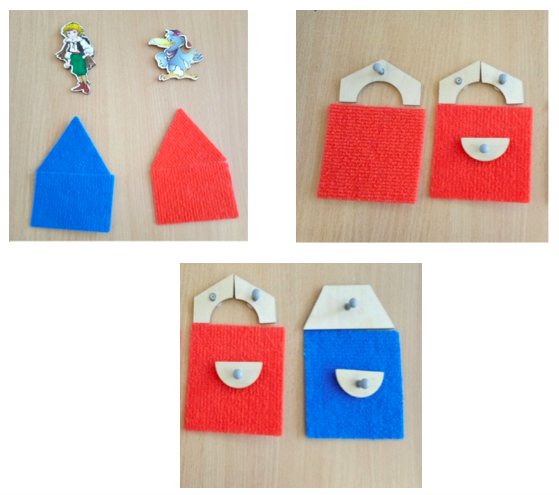
Option 2.
Take 3 heroes (Zhuzha the Bee, Mishik, Fifa the Caterpillar) and 3 different houses. For houses, different geometric shapes are chosen, different in shape and size: there should be 2 different shapes and 2 sizes - a large square, a small square, a large triangle.
Condition: Mishik lives in a big house, Zhuzha lives in a triangle. Where does anyone live? Reflections: Mishik lives in a big house - which means it could be either a big square or a big triangle. But, since Zhuzha lives in a triangle, Mishik can only live in a large square. There is a small square left for Fifa.
Conditions may include negation - not square, not big.
The houses are the same. Zhuzha does not live in a square - that is, in a triangle. Fifa does not live in a big house - that is, in a small square. Mishik lives in a large square.
Option 3.
3 houses are taken: 1st and 2nd - identical in shape, 3rd - different in shape; or 2nd and 3rd - identical in decoration (roof, windows, door, chimney on the roof), 1st - different from them in finishing of the house.
Condition. The 1st house is a square with a single window, the 2nd house is a square with a double window, the 3rd is a rectangle with a single window. Mishik lives in a square house; Zhuzha lives in a square house; Zhuzha lives in a house with a double window.
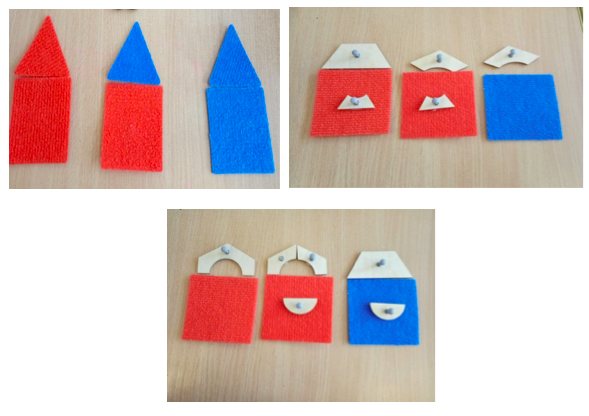
Answer. Mishik is in the 1st house, Zhuzha is in the 2nd, Fifa is in the 3rd house. Drawings – different versions of 3 houses
Option 4.
4 heroes and 4 houses for them are considered. House options are made up of game details.
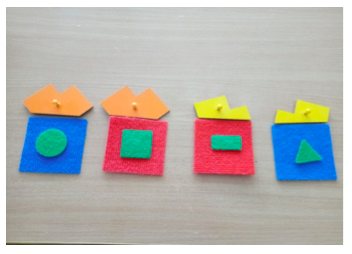
Games and toys for kids
Contained in sections:
- Didactic games 32101
- Sensory development and education. Sensory 6541
Includes sections:
- Didactic and sensory aprons and skirts 100
- Smell. Games, manuals “Recognize by smell” 9
- Velcro games 102
- Keyboard games 12
- Games with rubber bands 63
- Flashlight games 32
- Palms. Games, teaching aids 50
- Marbles. Games with pebbles 185
- Couple, pick a couple, couple pictures 279
- Pick up a patch. Games, teaching aids 65
- Clothespins. Games with clothespins for children 485
- Tactile development of children. Games and aids 436
- Color, learning colors. Games, teaching aids 1497
- Laces. DIY games with laces 167
- Noise boxes. Games, teaching aids 24
By groups:
- Junior group
Showing publications 1-10 of 1203. All sections | Sensory games
New
Photo
The best
Didactic game on sensory education in an early age group “Razvivashka”

Didactic games for the development of sensory abilities of children of early preschool age “Didactic games for the development of sensory abilities of children of early preschool age” Childhood, namely “early” is that period of a child’s life when he does not know how to do a lot of things, does not understand, but thanks to hostile mechanisms, he has a predisposition to everything...
"Permutations"
Children's age - from 3-4 years - easy tasks on 3-4 cells of the "Carpet Chest", 4-7 years - tasks on 4-10 cells of the "Carpet Chest".
Objectives of the game: - to develop and improve the ability to examine the conditions of problems, the ability to plan solutions to problems, the ability to consciously solve problems to the end; - develop attention, memory, thinking, observation, concentration, visual perception; - develop the ability to navigate on a plane - left, right, up, down, up right - Peacock, down right - Pony, up left - Lion, down left - Doe; - develop counting skills - the number of steps in cells, subtract a smaller number from a larger number.
Materials and equipment: “Carpet Box”, cards of numbers of any variant (animal figures, numbers from the game “Transparent Number”, “Dominoes”, a set of numbers on a carpet).
Progress of the game.
Option 1. For children of senior preschool and primary school age. On the “Carpet Casket” in the first row, in each cell on top there are numbers from 1 to 10 in order. One of the numbers is missing - 1, 2, 3, 4, 5, 6, ..., 8, 9, 10. (no 7).
On the second row, the numbers from 1 to 10 are arranged in random order. No number is the same as in the first row. 2, 5, 6, 1, 3, …., 10, 4, 8,9. (no 7).
Task: rearrange the numbers in the second row so that they are the same as in the first, in ascending order.
Condition: you can only put a number in an empty space.
Game situation: identical numbers (little animals) walked in pairs along the paths of Kovrovaya Polyana, but one of them wanted to have fun and ran away from his friend, and then got lost. Let's guys help him find and catch up with his friend.
Questions for children:
— neighbors of numbers in the first row; who is behind what number; who is in front of some number; who stands between two numbers; who comes after a certain number; who is fifth (any) from the end. - who is in first place in the second row; who is 2nd, 3rd, 4th, etc; who stands before 5, after 4, behind 7, between 4-6, etc. - what is the number to the right above 6 on the second row; bottom left of 5 in the first row; any question on orientation - Lion, Peacock, Pony, Doe; — what number is missing in the first row? – 7; - Which seat is empty in the second row? – 6th cell; — where is the number that needs to be put here? – number 6 is in cell 3; — what number can we put in its place? – 6; - how to do it? – move 6 by 3 cells to the right; - how to check if we did it right? – 6-3=3 steps to the right; — what next number can we put in its place? Which cell is empty? – put the number 3 on the 3rd cell; - Where is the number 3 now? – on cell 5; — how should we move it? - left 2 cells; - how to check? – 5-3=2 steps to the left; - which cell is empty and what number can we put there? – in cell 5 you can put the number 5; — where is 5 now? How can I move it to its place? – the number 5 is in the second cell, move it 3 cells to the right; - how to check? – 5-2=3 steps to the right; - what will we do next? – empty 2nd cell, put the number 2 in it, now it is in 1st cell, move it 1 step to the right, check 2-1 = 1 step to the right; - what do we do next? – empty cell 1, number 1 is in cell 4, it must be moved 3 steps to the left, check 4-1 = 3 steps to the left; - the following actions? – empty cell 4, number 4 is in cell 8, it must be moved 4 steps to the left, check 8-4 = 4 steps to the left; - what's next? – empty cell 8, number 8 is in cell 9, you need to move it 1 step to the left, check 9-8 = 1 step to the left; - further? – empty cell 9, number 9 is in cell 10, you need to move it 1 step to the right, check 10-9 = 1 step to the right; - and what is the last number out of place? – number 10, it is in the seventh cell, you need to move it to the right 3 steps, check 10-7 = 3 steps to the right; - now all the numbers are in their places, are they the same in the first and second rows? - Yes; — what number is missing in both rows? - 7.
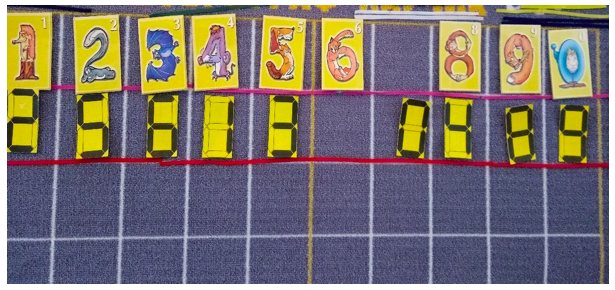
Option 2. Starting from 3 years.
On the “Carpet Casket” in three cells on the first row there are any two figures (there can be: images of geometric shapes, objects, letters, numbers, people, heroes of the “Purple Forest”, animals, transport - on any topic currently being studied in group).
In the second row, below them, in three cells, these same two figures are located in a different order (for example, in the 1st row - a square, an empty cell, a circle; in the 2nd row - an empty cell, a circle, a square).
Task: rearrange the figures in the second row so that they are in the same order as in the first row.
Condition: you can only place a piece on an empty space.
Children can rearrange the figures themselves on the “Carpet Casket” one by one; The teacher encourages the children to pronounce the necessary actions: which cell is free, what needs to be placed there, where the desired figure is, how the figure can be placed - how many cells to the right or left it needs to be moved.
For children who successfully complete different versions of tasks and exercises, a larger number of cells are used in the game - 4, 5, 6 and up to 10.
The whole group of children on their “Mini-Larchiks” does the same work as on the “Kovrograph Chest”. You can first ask the children to rearrange the figures on their mats themselves. Then check how it turned out on the Carpet, each time the child must pronounce his actions - which cell is empty, which figure needs to be put there, where this figure is, how to move it to the empty cell.
Options for solving problems may be different for each child, depending on the arrangement of the figures. When children cope with easy tasks on 3 cells, we increase the number of cells from 4 to 10.
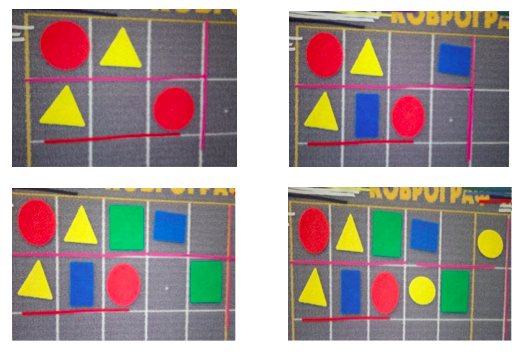
Do-it-yourself didactic games and manuals for kindergarten
DIY didactic games
Hello, dear colleagues, friends! I want to share with you ideas for making games with my own hands (these games were made by me over the past three years), I wanted to collect all the games in one section.
Layout "Pets"
was made from waste material (cardboard and newspaper tubes) for preschool children.
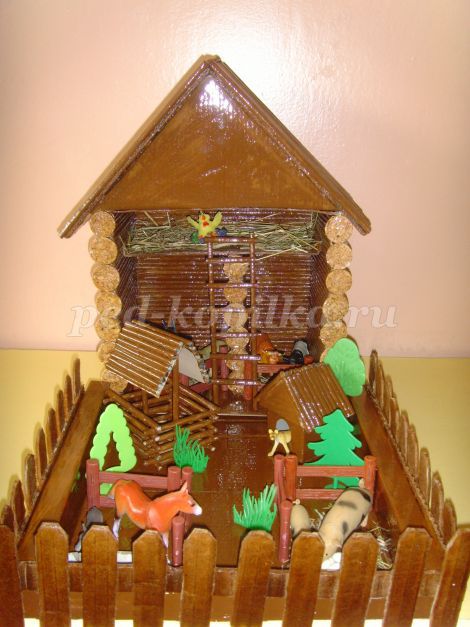
here Goal: to consolidate ideas about pets. Objectives: Educational: To consolidate children's knowledge about domestic animals.
Note the characteristic features of animals. Strengthen the ability to compare, find similarities and differences. To develop the ability to distinguish between animals and their young. Develop the skill of writing a short story about animals. Educational: Develop children's memory, thinking, imagination. To develop children's interest in living nature and emotional responsiveness. Educational: To instill in children a love for their native land. To instill in children a kind attitude towards animals, to create a desire to help them. Model "Miller's Yard"
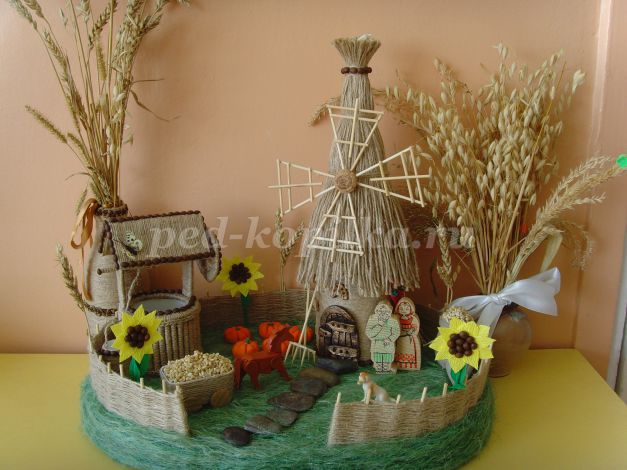
Miller's yard.
Master class Purpose: the layout is intended for direct educational and play activities of children of senior preschool age, for interior decoration. The goal is to promote the emergence and development of emotional and cognitive interest in the historical and cultural heritage of Russia. Objectives: 1. To consolidate knowledge about the characteristics of peasant labor and the profession of a miller.
2. Expand the understanding of the life of a peasant family in Rus'. Didactic game: “Feed the bun”
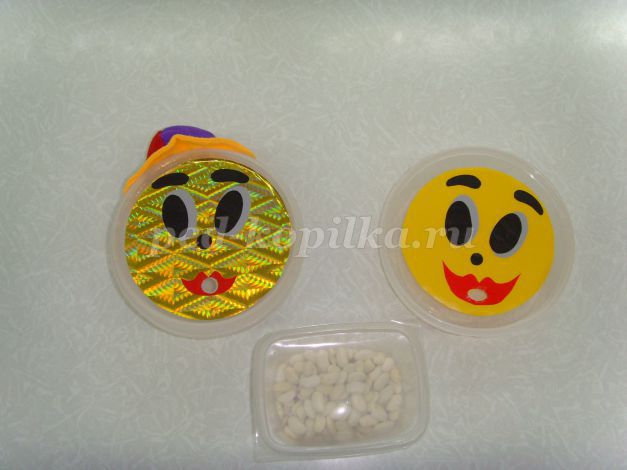
Goal: development of fine motor skills and tactile sensitivity. Equipment: small plastic jars with lids, beans.
Making a manual: depict a kolobok (or other character) from self-adhesive paper on the lid. Make a hole in the mouth with a stationery knife (it’s convenient to cut a hole if you twist the knife in a circle) “Fisherman”
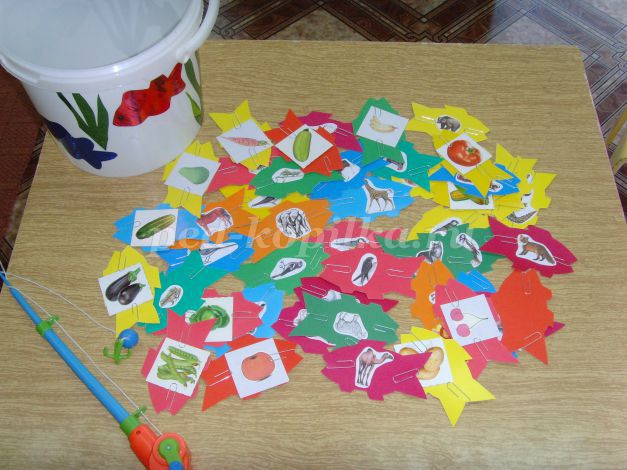
There are many variations of this game. It can be complicated depending on the age of the children. I offer my options with children of the younger and middle groups. A child catches a fish with a fishing rod. 1. “What size and color is it?” Purpose: to exercise children in determining the size of the fish; consolidate knowledge of color. 2. “Where does it grow?” Purpose: to learn to classify objects according to the topics “Vegetables”, “Fruits”. 3. “Who lives where” Purpose: to learn to classify objects according to the topics “Domestic, wild animals” 4. “Where is whose mother” (additional cards with images of animals are needed) Purpose: to learn to select domestic and wild animals, name them correctly. 5. “The fourth odd one” Purpose: to teach how to classify objects by topic.
"Carnations and Rubber Bands"
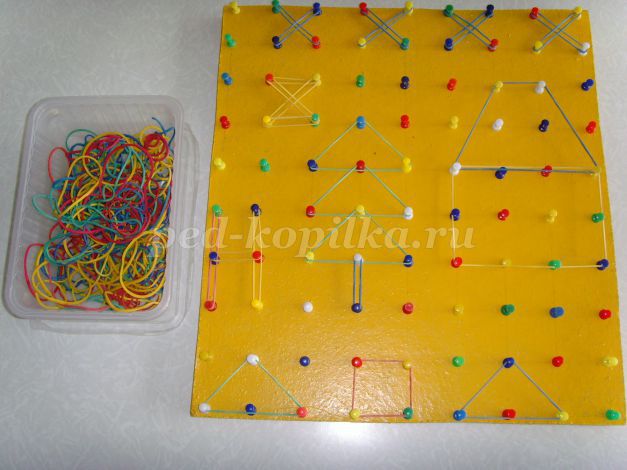
For this game you need wooden plywood, stationery nails and rubber bands. Purpose: for the development of fine motor skills, visual, color and spatial perception, imagination;; consolidate knowledge of various types of geometric shapes and lines.
Game "Funny Dwarfs".
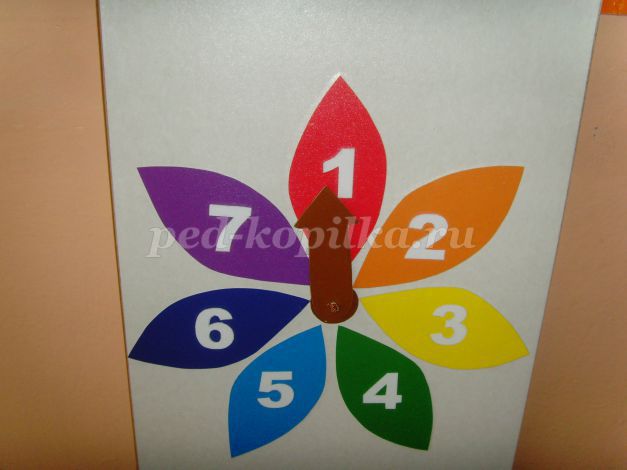
Goal: learn the names of the days of the week and their order, consolidate the concepts of yesterday, today, tomorrow.
First option. “Which gnome is gone.” Children close their eyes, the teacher removes one gnome. Children open their eyes and guess which gnome ran away. Second option. Children close their eyes, the teacher changes the order of the gnomes. Children open their eyes and place them in the correct sequence. Third option. We teach together with the children yesterday and tomorrow, if today is Monday, yesterday and tomorrow, if today is Tuesday, etc. goal: to develop tactile perception in children; enrich children's active vocabulary with new words, develop memory, attention, imagination, imaginative thinking; fine motor skills. "Tactile caps"

For the game I took: - bottled water caps; - different textured fabric, fur, sandpaper, leather, beads; - glue. Progress of work: - I cut out circles of the same size as the lids from various materials and glued them on. How to play: - Put all the caps in an opaque bag and ask the child to pull out a cap with a smooth texture, etc. - “Find a pair” - “Find dissimilar caps” (for example, fur and leather) - “Guess what (who) it looks like” - “Guess who I am” (red fur - fox, sandpaper - hedgehog, smooth skin - frog)
Educational game “Squares with a secret”
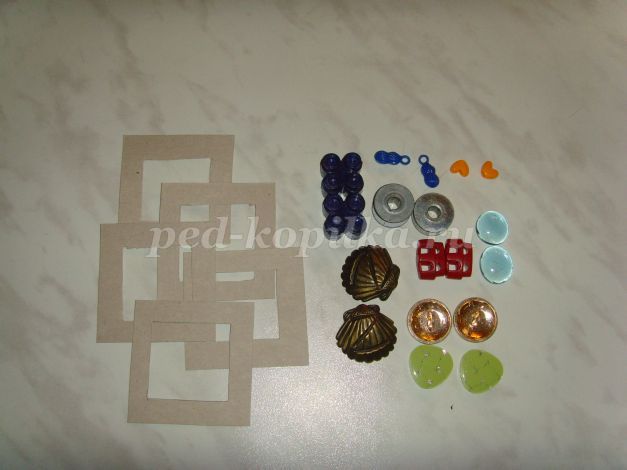
Goal: to enrich children’s active vocabulary with new words, to develop memory, attention, and fine motor skills. The sense of touch or tactile perception plays an important role in development. And it is associated with the development of imagination, imaginative thinking and creative speech abilities in children. And training fine motor skills of the fingers stimulates the timely development of speech skills. Each “square” is sewn from opaque fabric. It's a flat 6x6 pad with a cardboard frame inside and one small object in the center. There should be a pair of “squares” with identical objects inside. This game is multifunctional. The first option is “Find a pair.” The child feels the “square” and finds a match for it. Second option. It is necessary to divide the “squares” into two piles so that each does not contain the same ones. Place the first pile on the table, and distribute the “squares” from the second to the players equally. Players place their “squares” in front of them. The adult becomes the leader, but can also take part in the game. The presenter takes the “square”, feels it and describes its contents in words. For example, he says that there is a large smooth stone there. The player who has the paired square takes it for himself. The first person to get a pair for each of their “squares” wins.
Educational game "Candy"
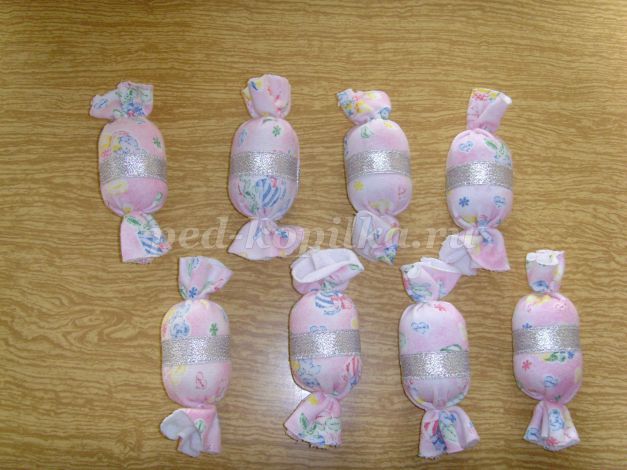
Goal: learn to differentiate non-speech noises, find identical-sounding “candy,” develop logical thinking, attentiveness, and memory. Hearing is no less important a tool for understanding the world around us than sight and touch. The ability to hear and distinguish sounds also requires constant training. The better a child hears, the faster he will learn to understand the meaning of what is being said to him and the faster verbal communication will become an effective way for him to gain new knowledge. Each “candy” is made from kinder surprise. The “candies” are filled with various fillings that produce a certain sound when shaken, and are lined with bright fabric. A pair consists of “candies” that make the same sound when shaken, with the same filling. These could be beads, cereals, paper clips, etc. The first option is “Find the same one.” Two people are playing. “Candy” is laid out on the table, the player takes any one “candy” and rattles it, and then takes another one and also shakes it. You cannot take more than two “candies”. If the sound is different, then the player puts each one in its original place, and the turn passes to the next player. If the sound is the same, then the player takes both candies for himself and gets the right to immediately make another move. The game continues until there are no more candies on the table. And this is a similar game to “coffee girls”, the manual is made from chocolate eggs and covered with thermal film
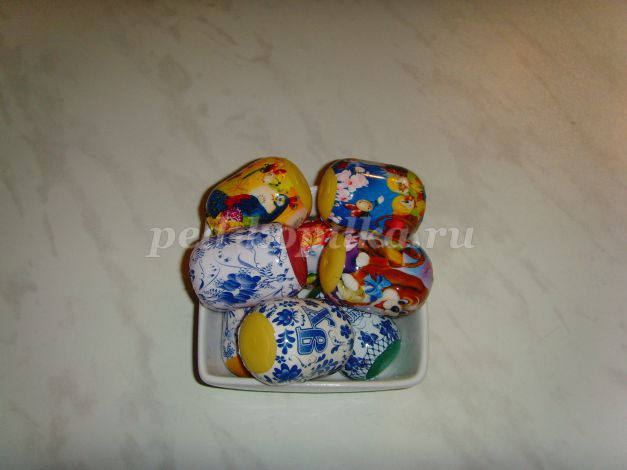
Game for developing fine motor skills “Surprise Box”
"Box of Feelings"
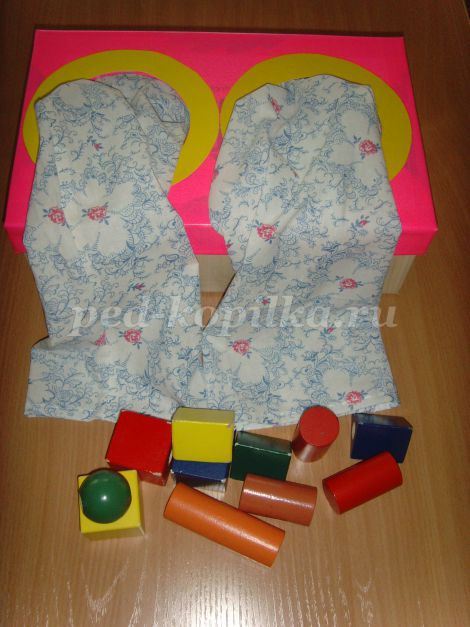
This manual is made from a shoe box. Two circles are cut out on the lid, the sleeves are sewn from cotton fabric, the whole box is covered with self-adhesive. I would be glad if anyone gets some ideas! There are so many interesting ideas on the site, I want to do a lot, but I don’t have enough time for all the time! I wish everyone creative success, ideas and more time to implement them! Thanks to everyone who looked at the page and watched to the end!
We recommend watching:
Do-it-yourself didactic game for kindergarten “Know-It-All” Didactic manual “Grandfather Planted a Turnip” Games with clothespins. Didactic manual “Who eats what” Do-it-yourself educational toys “Balls - Smeshariki”
Similar articles:
Do-it-yourself didactic games for preschoolers on the topic “Sense Organs”
DIY didactic game for preschoolers. World of flora and fauna
Do-it-yourself didactic game for kindergarten on the topic “Transport”
DIY didactic game for preschoolers
Didactic game for children 4-7 years old “Fairytale Hotel”
Didactic games on traffic rules
Goal: — consolidation of children’s knowledge about various types of transport (passenger, cargo, passenger); traffic signs;
Objectives: Educational: 1. To form children’s ideas about various types of transport. 2. Consolidate knowledge about sensory standards of color. 3. Practice distinguishing objects by shape and size. 4. Familiarize children with a graphic representation of the letters of the alphabet. 5. Expansion of vocabulary. 6. Preparing the child for reading; learn letters, learn to read syllables; remember the sequence of letters of the alphabet; 7. Remember the emblems and names of cars. 8. Consolidate knowledge about traffic signs.
Developmental: 1. Develop concentration. 2. Develop visual and figurative thinking. 3. Develop the ability to combine objects based on certain characteristics (classification).
Educational: 1. Stimulate children’s ability to negotiate with each other about upcoming joint activities 2. Cultivate interest in the rules of behavior on the road.
HOW TO GET?
Goal: to help children navigate in kindergarten, to correctly find this or that room.
Approximate scheme of the game.
The teacher says that the bunny Stepashka’s ears hurt. What should he do? Go to the doctor
. But Stepashka doesn’t know where the medical office is, we need to help him. Three or four children are asked to “accompany” Stepashka to the doctor (medical workers are warned about the upcoming visit in advance). The teacher comments all the way to the office (first we will leave the group, then we will go down the stairs, then we will walk along the corridor and reach the medical office) and back. You can be guided by some objective signs: let’s go down the stairs and immediately after the drawn bunny will roll up. The cured Stepashka thanks the children for their help and conveys the doctor’s wishes not to get sick and vitamins for all the children. In much the same way, you can “wash” a dress for a Katya doll, or borrow an interesting book or game from a methodologist.
“Find your car your garage”
Material: 14 garages - 7 primary colors, each color has its own car brand; Silhouettes of cars of different colors and the emblem of the car brand.
Methodical manual:
Game task: Find each vehicle its own garage.
Rules of the game: The child takes the car, you need to name the make of the car and determine its color, and then choose the appropriate garage.
Progress of the game:
Educator: Option one Look what happened, all the cars got lost. Help the cars quickly and take them to the right garage. Educator: Option two These are not simple garages, but colorful ones. Take the car of the desired color and take it to the desired garage. (children select a car according to the color of the garage) Educator: Option three And so, look carefully. How are the garages different here? Large and small garage The answer, of course, is yours. Choose the right size car, and take it to the right garage. (children select a car according to the size of the garage) Educator: Option four Kid, now look at the garages here are so different. Each one has its own car, look at the picture and boldly move forward! (children select the car according to its shape). It should be noted that the bright silhouettes of cars attract the attention of children. They happily send the cars to the garage, naming them, identifying the car make and color. Both the playing cards and the silhouettes of the cars are quite practical and durable, which allows the teacher not to worry about the safety of the kids and the breakdown of the game. The game can be used for group activities with children. But the game is especially good for individual lessons with children.
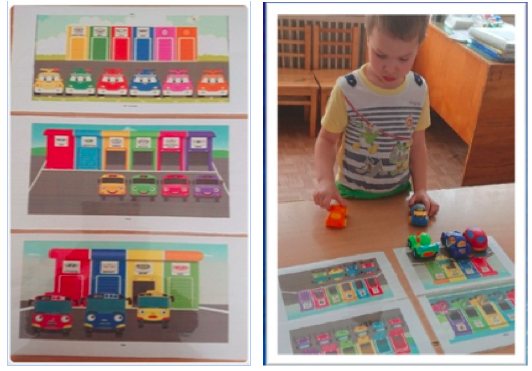
"Automotive ABC"
The alphabet will quietly and naturally enter the life of every child who begins to get acquainted with written language. Interest is the main principle underlying this board game. After all, nowadays it’s very difficult to surprise children with anything! With the help of games, you can help your child prepare for school or make his first steps at school easy, consolidating the acquired knowledge at home, in play, and develop imagination and resourcefulness. “From recognition to action” - this is how one can designate the entire spectrum of a child’s actions with gaming material. To avoid many school difficulties, it is necessary to teach the child to hear, recognize and distinguish the sounds of his native language as early as possible.
Material: - 4 playing tracks with letters; - cardboard cards of letters and car emblems. - chips and dice.
Goals of the game: - To familiarize children with the graphic representation of the letters of the alphabet. — Expansion of vocabulary. — Preparing a child for reading. - Learn letters, learn to read syllables; — Remember the sequence of letters of the alphabet; — Remember the emblems and names of cars. — Development of coherent speech, memory and attention, imagination and resourcefulness.
Rules of the game:
First option: We study the letters and emblems of cars. Before starting, children, together with the teacher (parents), get acquainted with the basic rules, examine the playing paths and study them. Then, next to the field, you should lay out the playing cards with the pictures facing up (the letter and emblem of the car brand). From the proposed cards, select a card with a letter and place it on the playing track, corresponding to the letter (or emblem).
Second option: The participant rolls the dice, counting down the required move, places his chip (or car) on the selected letter, then selects a suitable card with the emblem of the car brand or letter. If the child answers incorrectly, he misses his turn. The first one to complete the entire route wins. Having placed the cars at the start, the opponents alternately roll two dice (one regular, the other in the color of the traffic light), and, depending on the traffic light readings, move along the road. A green light, according to tradition, allows movement, a yellow light instructs to re-roll the die, and a red light means skipping a move.
Third option: Find a couple. From the cards offered, you need to choose a pair. To help children, cards with the letter and car emblem are the same. For example: N – Nissan, O – Opel, A – Audi.
Fourth option: Make up a word. You can make words in different ways: • From letters alone; — (DREAM) • From car emblems alone; - (Suzuki, Opel, Nissan) • Mixed - (at the top of the letter, at the bottom of the car brand)
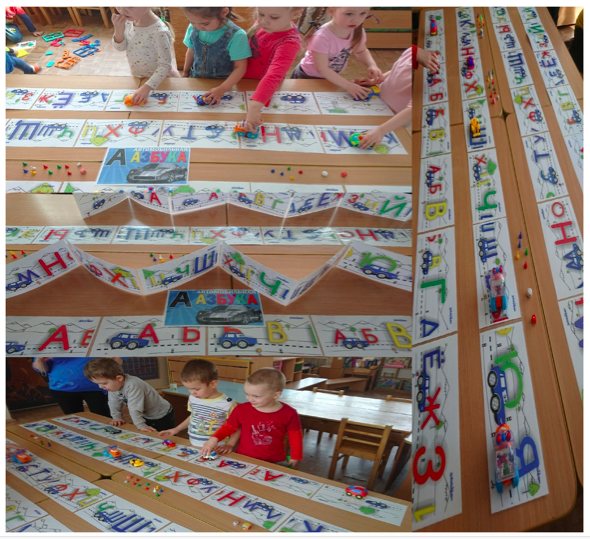
"Road Alphabet"
Instructions: - cover all fields of the large map with the corresponding pictures with traffic signs; - name the letter of the large field and what the corresponding traffic sign means; - a game for orientation on a plane: which letter (sign) is on the 1st row in the 3rd cell, on the 5th row in the 5th cell, under the letter B, above the letter O, to the right of the letter L, between P and S, and so on; - game “Fly” - the car was driving through the city - from the gas station it went to residential buildings - how? 2 cells to the right and 1 cell down; Then she drove along the Circular Traffic to the parking lot - how? 1 cell down and 1 cell to the left, down 1 cell; - what signs are drawn in red - why? – prohibiting. What signs are drawn in blue - why? – informational. Find round, triangular, rectangular, square signs and tell where they are located; — which letters are drawn in red, which ones in blue, which ones in green? Where are they located; — a walking game: start on the letter A, roll the dice one by one, walk around and name the letter and the sign on which the chip (small car) lands. Agree in which direction we will walk in the lower rows (like a snake - in a zigzag or always starting from the first cell on the left). If you hit a red letter, you must skip a move. Whoever does not know the name of the sign or the letter either misses a move or returns back to the previous cell.
FIND A TOY.
The leader hides a small toy in the group, in one of its rooms, and then invites the others to find it. At first it is not so difficult to find, for example:
“The toy is lying on the windowsill in the reception (locker room). Then more difficult:
“The toy lies in the bedroom, under the pillow on Nadya’s bed.”
After the toy is found, it must be said what it was doing there (going for a walk, sleeping...)
Later, you can guess the location of the toy in a different way: through the function of the room (“Washes the dishes”), through its actions (“Lies quietly, eyes closed”).
Having mastered the group, you can move on to a closer acquaintance with the kindergarten and its employees. It’s better to start with excursions around the garden (it’s more advisable to organize thematic excursions: to the kitchen, to the medical office), and get to know the people working there.
"Car ABC" and "Learning the Alphabet"
Instructions: - lay out all the cards with pictures of cars on a large playing field, naming the letters and make of the car; - what color are the letters, what color are the cars; where are they located? — find similar cars by shape; - in the "Automotive ABC" - orientation on the plane - where they are located - under..., above..., between..., left-right,; game "Fly" - moving down-up-right-left by a certain number of cells; - in “Learning the alphabet” - orientation on the plane - where they are located in relation to other pictures;
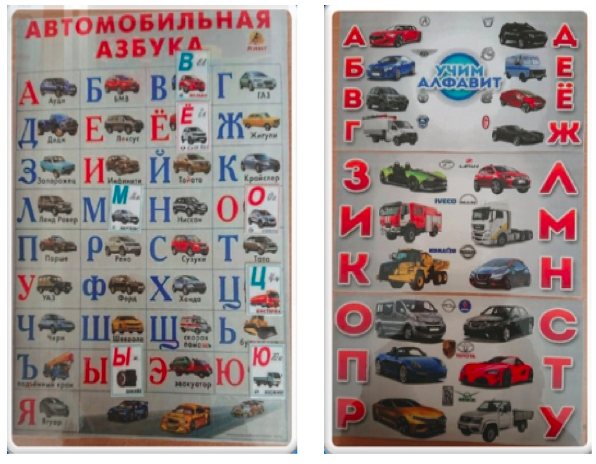
"Emblems and car brands"
Material: a large field on which emblems and names of cars are depicted in English and Russian.
Instructions: - place small cards with car emblems on a large field in the appropriate place; Name the make of the car, if possible - describe what it looks like (circle, oval, with letters, with arrows, etc.); - walking game: throw the dice and walk from a certain cell by agreement from row to row, name the make of the car; — tasks for orientation on a plane: where they are located, below-upper-right-left, under, above, between, left, right of a specific model; - describe what color the emblem is and what is depicted on it; - find from memory car models from the games “Car ABC” and “Learn the Alphabet” and combine them with emblems.


